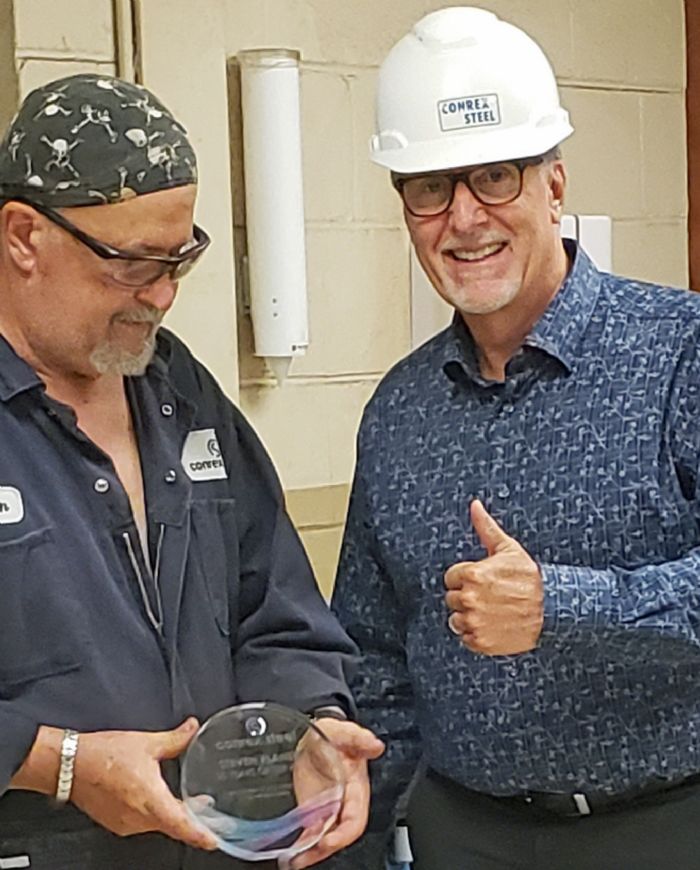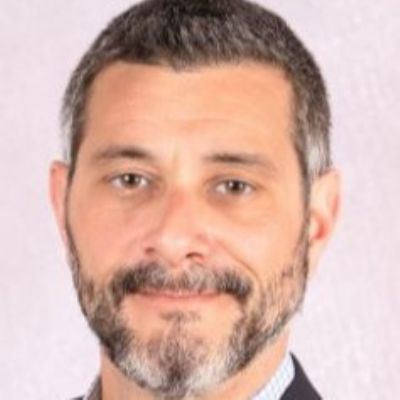Harrison: I’m nearly finished reading The Goal, by business consultant Eliyahu Goldratt and novelist Jeff Cox. (Editor’s note: Per Amazon.com, “this book can be used for case studies in operations management, with a focus geared towards the theory of constraints, bottlenecks and how to alleviate them, and applications of these concepts in real life. It is used in management colleges to teach students about the importance of strategic capacity planning and constraint management. Time Magazine listed the book as one of ‘the 25 Most Influential Business Management Books.’”)
The book tells a fictional story of an unprofitable, unreliable production facility where the manager has 3 months to turn the company around. Among the lessons I’ve taken away is that, as a leader you must understand the company’s environment and the causes and effects of certain things. It has helped me focus my team on what needs to change, how to establish new goals, and then how to develop the paths to get there.
With all of our new capacity and capabilities, including the new hydraulic press, managing the changes and projects is a real opportunity for our management team and myself to improve together. So, yes, I will be sharing and discussing the lessons learned from the book with my team over the next year or two, so we’re all following the same paths. In fact, I’ve already asked my procurement manager to purchase seven more copies.
One key takeaway that I’ve already realized during my career: Change management is critical, as we all need to cohesively work together as a team to manage the changes, have checkpoints, know how the individual teams are going to accomplish their goals, and understand how each individual area of the company impacts the overall strategy.
Q: What is the biggest challenge you
face as a company leader?
Harrison: It all starts with the new press
and some other recent capital investments, including automation equipment and a
new lean/overall-equipment-effectiveness software platform. We know that we can grow, and we know what we
need to do, now we just have to execute.
And that starts with evolving the company culture, and then maintaining
it so we all continue moving forward in one direction. Of course, the next big challenge is changing
the buying habits of our customers so that they recognize our new capabilities,
while also enticing new customers. This
requires a different strategy for each type of customer.
When I joined the company as president in 2017, the culture was somewhat complacent; we were content to follow the ebb and flow of the oil and gas industry. I wanted to change that to allow us to grow, by being more strategic. That’s a big change, and for me the starting point was to engage everyone in the company. I also visited our top 20 customers, spoke with the top five customers that we had recently lost, and talked to our suppliers to get their perspectives on our company, good and bad.
After that
analysis, over a 4-month period, I then set the strategic goals for equipment and
capability changes plus a new culture that embraces change.
Q: What are two or three of the most
important things you look for in a mid-level manager?
Harrison: I look for managers with big runways for growth. I don’t want people that are at their best right now; I want people that can grow and are eager to do so. Managers also should have strategic minds, be strong communicators and really enjoy executing with their teams.
And, of course, my managers must be able to develop the type of culture we’re looking for within in each of their respective areas.
Q: What are two things that you
believe your company is doing well? What's one thing that you wish you could
change?
Harrison: We’re well on our way to developing the type of culture we seek; we’re probably 70 percent of the way there, with plenty of opportunity to improve. As a company, we now think more strategically, as everyone understands the goals and their roles in achieving them. Our opportunities now lie in project planning and thoughtful execution, all while continuing to perform the day-in and day-out tasks. As managers, we must ensure our teams continue to drive toward achieving their strategic goals, so that we continue to move the needle.
To help with project planning and execution, we’ve recently hired two managers that have the required experience and talent, and they’re already starting to share their expertise with the rest of the team. I already can see other managers leaning on them, so it’s starting to work, but it takes time. We need to charge a few mountains before it will feel routine.
Q: How do you encourage and motivate
your management team?
Harrison: Communication, first and foremost, starting with a regular cadence of one-on-one meetings with my direct reports, and then they each meet with their teams regularly. During these meetings, the managers and I ask the employees about their own challenges and obstacles to achieving their goals, and how we as managers can help remove those obstacles. The management team and I also conduct quarterly reviews presented to the entire staff. It forces each manager to stay on track with their department goals and KPIs, sharing what we’re learning along the way. This constant communication ensures that everyone understands the plan and how they fit into it. I want them pulling the management team and me, rather than us pushing them; I find this to be very motivating.
And, we have
a profit-based bonus structure, so they get the fruits of their labor.
Q: Can you provide an example of a
solid management decision you made during the COVID-19 pandemic, and how it
helped to address a major pandemic-related challenge?
Harrison: Again, communication, to help our employees cut through the media hype—we call it “hoopla”—that only serves to create fear, panic and poor decisions. From the beginning of the pandemic, we held daily management meetings to discuss the actual data surrounding the pandemic and then send real information and facts from credible sources (WHO, CDC and Canada Health) to the employees, to help alleviate their fear. I believe most of them felt safer at work than at home—we had a very tight protocol, gave them everything they needed to work safely, and helped them understand what was going on. We never closed our doors, and only had one case over an 18-mo. period among our four facilities.
We continue
to perform rapid tests on every employee weekly and take their temperature
daily. And we require employees to be double vaccinated, a decision that, while
it did cost us a few employees, we feel we made for the right reasons. I wear the responsibility to protect the
health of our employees on my sleeve. No one, including me, wants to see our
coworkers or their families get sick, or the company have to shut down.
Q: I assume it can be “lonely at the top” for you at times. How do you relax, release your stress and rise above the endless list of problems you have to deal with each day?
Harrison: I’m a very competitive person, always played sports. I once was a competitive beach volleyball player. To me, running a business is like being on a sports team; we want to win and be on top. We’re striving to be number one. I can’t wait to get to work every day—I get angry at traffic not because of the traffic but because it’s delaying my purpose here with our team.
When I do need to destress and avoid burnout, I take my family out on our sailboat, go for a motorcycle ride or even wakeboard. When I’m doing those types of activities, I need to stay focused on what I’m doing and can’t think about work. It’s a true break!
Technologies: Management
 This month we invite Larry Harrison, president of Conrex Steel, to share his insights. We spoke with Harrison just a few short months ago when the company, a Canadian fabricator of tank heads for the oil and gas, hydrogen, cryogenics and nuclear industries, among others, had recently installed a new 3500-ton hydraulic press. Inaugurated with a ribbon-cutting ceremony on November 19, 2021, attended by Ontario, Canada, Premier Doug Ford, the press can form heads to 7 in. thick and 196-in. dia.
This month we invite Larry Harrison, president of Conrex Steel, to share his insights. We spoke with Harrison just a few short months ago when the company, a Canadian fabricator of tank heads for the oil and gas, hydrogen, cryogenics and nuclear industries, among others, had recently installed a new 3500-ton hydraulic press. Inaugurated with a ribbon-cutting ceremony on November 19, 2021, attended by Ontario, Canada, Premier Doug Ford, the press can form heads to 7 in. thick and 196-in. dia.








